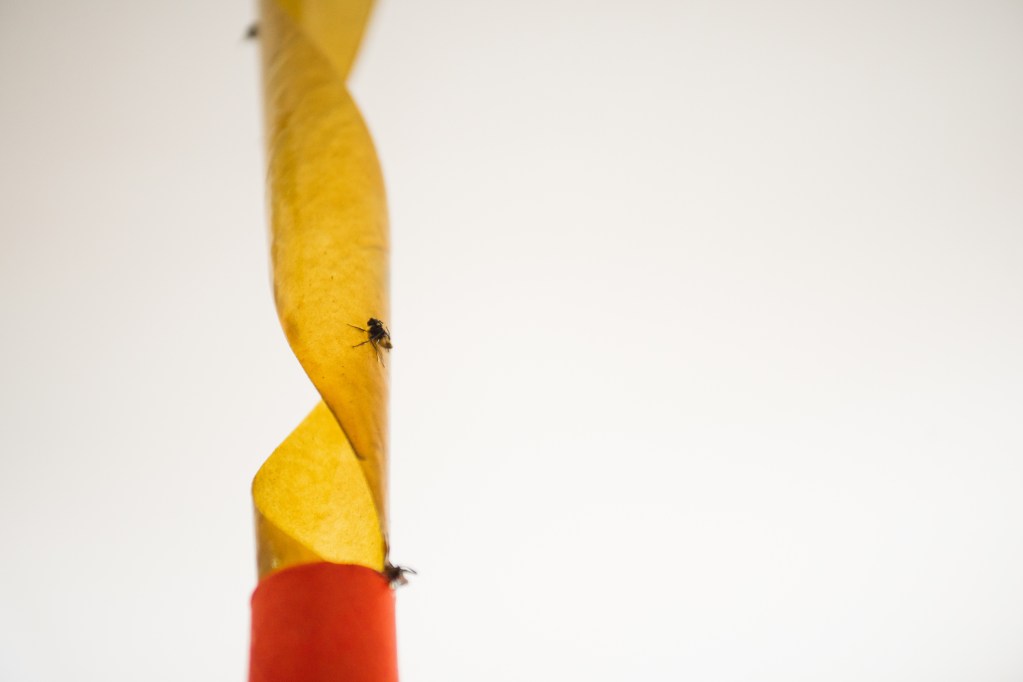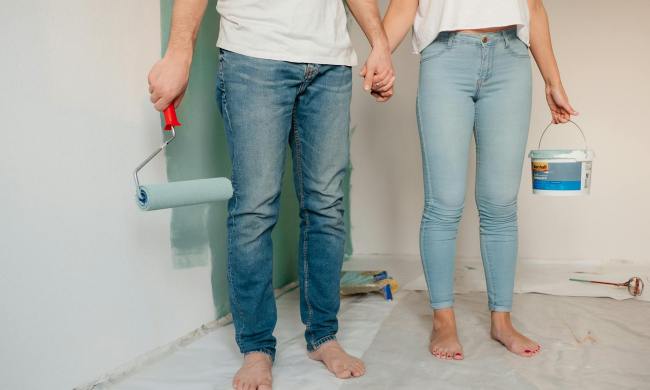
If you’ve ever left fruit on the counter for a little too long or skipped a day taking out the trash, chances are you’ve found yourself face-to-face with flies in your home. While a few flies don’t always lead to an infestation, sometimes things get out of hand. Here is how to get rid of flies and tackle their breeding grounds for good.
What attracts flies to your home?

Several things can attract flies into your home, but the most common tend to coincide with moisture and foul odors. Finding things around your house that fit these two characteristics won’t always guarantee the source of the fly infestation, but it could be a great place to start.
Exposed garbage
Exposed garbage, like trash bins without lids, can be a breeding ground for insects. And if you have lids on your trash bins, double-check that there are no cracks or damages that could allow flies to get in.
Moisture in drains
Drain flies are a common pest that dwells in bathroom pipes around drains. Sinks, showers, and other water sources can be a nesting hole for these insects.
Spoiled food
Fruit flies, in particular, are a troublesome pest that is drawn to spoiled food and rotting fruit. Fruits and vegetables left on the tables or countertops can become a prime location for fruit flies and gnats.
Rotting plants
Rotting plants are also home to flies. In fact, plant pots that retain a lot of moisture or have mulch, like outdoor garden beds, can be a breeding ground for flies and their eggs.
How do flies get into the house?

Flies mainly get into houses through open doors and windows or cracks and small rifts around the home. Some come through improperly sealed window cracks, while others find their way in through torn screens or holes in the wall. Make sure you stay on top of your home maintenance by checking window screens and screen doors periodically, sealing any cracks around windows and baseboards, and repairing damages on the exterior of the home can help limit fly entry.
What to do to limit flies indoors

While consistent and proper home maintenance can help keep flies at bay, these pesky insects can sometimes find their way inside without us knowing. Here are other measures you can take to stave off a fly infestation.
Keep your trash can covered and clean
Make sure all indoor trash bins are covered and that bags are removed frequently. Don’t allow foul smells to sit for too long, and stay on top of emptying the bins when they are full. Avoid putting wet materials in the trash can if you think it will be sitting for a few days. Also, periodically clean your trash bins with a few drops of dish soap and water. Outdoor bins should be cleaned once a month. However, some homeowners opt for a grand cleaning once every season.
Clean your sink drains
Another way you can prevent a fly infestation is to clean your sink drains. Keeping drains clear, clean, and free of bad smells can help ward off pesky drain flies. Additionally, closing drains with a drain cap when not in use can also be a good practice.
Keep pet spaces clean
If you own indoor pets like cats, birds, or reptiles, you’ll want to keep their cages, beds, litter boxes, and other spaces clean. Change out water and food bowls daily and regularly clean them. Be sure to remove pet waste often as well.
Remove any rotting houseplants
If you have houseplants, check for root rot or excess moisture. While it’s important to water your plants, overly moist soil can encourage infestations.
How to stop flies swarming in your outdoor spaces

While we often think of infestations as an indoor issue, flies can also gather outdoors, creating an annoying situation for homeowners. Here’s how to prevent outdoor swarms.
Maintain upkeep on garden and flower beds
Maintaining your garden and flower beds by keeping mulch piles fresh and tending to root rot quickly can help prevent fly infestations. Additionally, don’t allow produce to rot in your garden without some minimal processing.
Keep garbage cans empty
Another way you can limit fly infestations outdoors is to keep garbage cans empty. Be sure to put out your bins for your trash removal service or take them to a local disposal location for proper processing.
Find solutions for pet waste
If you own outdoor animals or have a pet that goes to the bathroom outdoors, be sure to find solutions on how to handle pet waste so it doesn’t attract flies.
Don’t leave mulch piles by the house
Mulch piles are a haven for flies and other pests. While they can be necessary for landscaping and topping off garden beds, we advise you to keep mulch piles away from the house so that flies don’t wander in.
How to get rid of flies at home

If you already have a fly infestation, follow these solutions to tackle the issue.
Apple cider vinegar and dish soap
A bowl of 1 cup of apple cider vinegar with a few drops of dish soap will attract flies and kill them once they drink from the soapy liquid.
Flypaper
Flypaper is a great solution for attracting swarms by trash cans or other spaces in the house where the source of your infestation is small and in one specific place.
Make a DIY bottle trap
Some homeowners try the DIY bottle fly trap. Cut the top third of a water bottle off and flip the top portion upside down so that it looks like a funnel. Poke holes in the cap before screwing it back on. Then, fill the bottle with apple cider vinegar and a few drops of dish soap. Flies can crawl into the holes of the bottle but won’t be able to escape.
When to call a professional
If you’ve tried the above DIY methods and reduced sources that contributed to the infestation but are still struggling with a fly problem, you may want to call a professional exterminator.
Flies may not be the scariest insects, but they’re certainly frustrating. Finding ways to limit their breeding grounds and tackle the things that attract them can help you avoid infestation.



